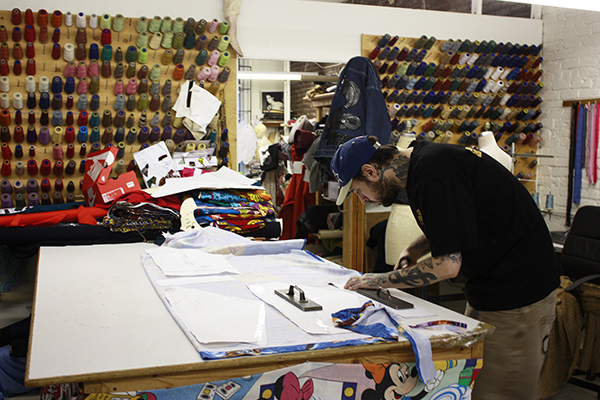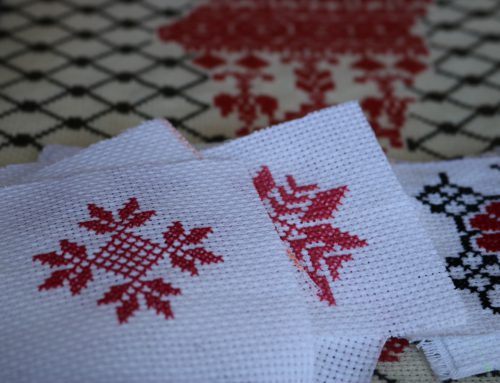BY Stephanie Ricci & Sarah Auclair
Leah Graham loves thrift shopping.
Like many others, the 26-year-old enjoys thrift stores for their abundant collections of inexpensive and unique pieces.
“It seems kind of irresponsible to buy something new when it or something similar probably exists already,” says Graham.
Thrifting appears to be a more eco-friendly alternative to new fashion retailers. Value Village, for example, claims to keep 700 billion pounds of usable items out of landfills every year.
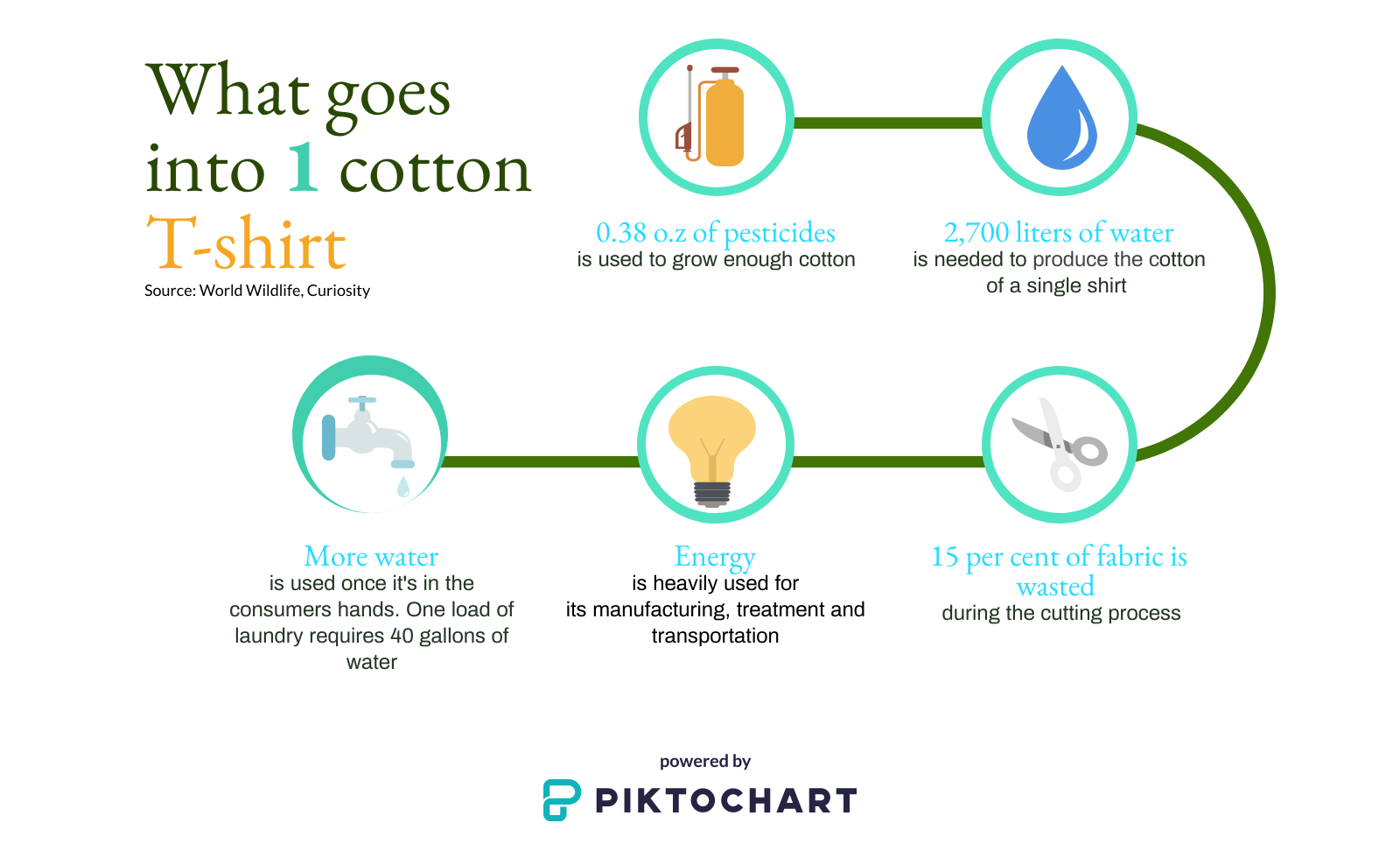
Take a look at what goes into the making of a single cotton t-shirt. Media by Stéphanie Ricci.
However, some experts say that excessive buying is the real problem in the clothing industry. They say retail outlets reinforce a culture of consumption which goes against sustainability, secondhand or not.
Consumer research consultant at iperceptions Ruby Thélot isn’t sure whether thrifting is the answer to sustainability.
“If I’ve got 20 pairs of shoes […], whether I buy secondhand or firsthand, I still have 20 pairs of shoes. The overconsumption is still there,” says Thélot.
He believes there is a “hierarchy of consumerism” amongst thrift shoppers who tend to have a “moral stance.”
“If you consider consumerism as crass because you’re educated, […] it’s easy for you to position yourself as morally and ethically [superior] as being someone who only buys second hand,” says Thélot.
“We’ve rebranded consumerism to be this thing that can be ethical, but there’s no such thing as ethical consumption under capitalism,” says Thélot.
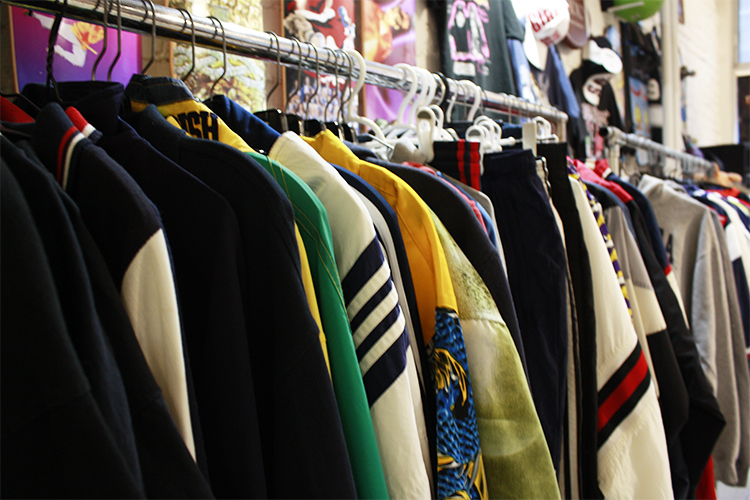
One of the few second-hand clothing racks at Stopshop Boutique. Photo by Sarah Auclair.
The streetwear thrift store Stopshop Boutique displays racks and racks of clothes, some of which are even hung up on its walls. None of them are new.
Co-owner Félix Lévesque revamps old clothing using second-hand clothes and fabrics, but he says the practice comes with a challenge.
“Clothes are no longer made to last,” says Lévesque, alluding to fast fashion. “It’s the clientele. Customers don’t want to wear a t-shirt for 10 years.”
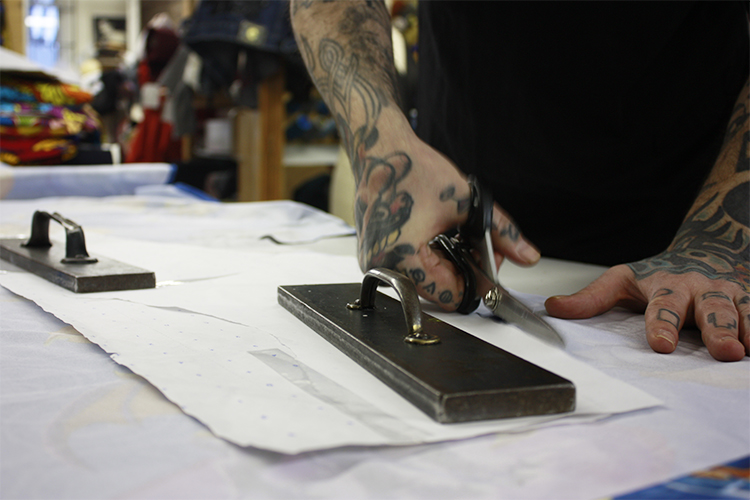
Félix Lévesque designing a future jacket. Photo by Sarah Auclair.
The designer and founder of Gaia & Dubos, Léonie Daignault-Leclerc, encourages the slow down of garment production and the use of better quality material that will last longer.
“We can’t rely on thrift stores forever because many of the garments found there won’t be able to last over 30 years,” she says.
In fact, people who may pat themselves on the back for going to thrift stores thinking they are helping the planet don’t necessarily shop any less. That is how Daignault-Leclerc came to terms with her shopping habits.
“I’ve always [thought I was] the eco girl. I always recycled as much as I could, I carpooled,” says Daignault -Leclerc. “… My friend pointed out that it was funny that I was eco-friendly but bought clothes every month.”
“The problem lies in overproduction and overconsumption,” says Daignault-Leclerc, “It’s the job of designers, the media, and the government to educate the consumer about the issues inherent to the fashion industry and what we can do to improve the situation.”
Daignault-Leclerc wrote the book Pour une Garde-robe Responsable, which tackles the environmental impact of the fashion industry. She shares a conscious practice for designers she calls a pre-sale business model: manufacturing only a limited amount of an item, calculated by foreshadowing its popularity after advertising it online.
Overconsumption has never been easier thanks to the digital era. A 2020 Canada Post report found that clothing is the most popular category amongst Canadian online shoppers, at 62 per cent. Computers and electronics are second at 41 per cent.
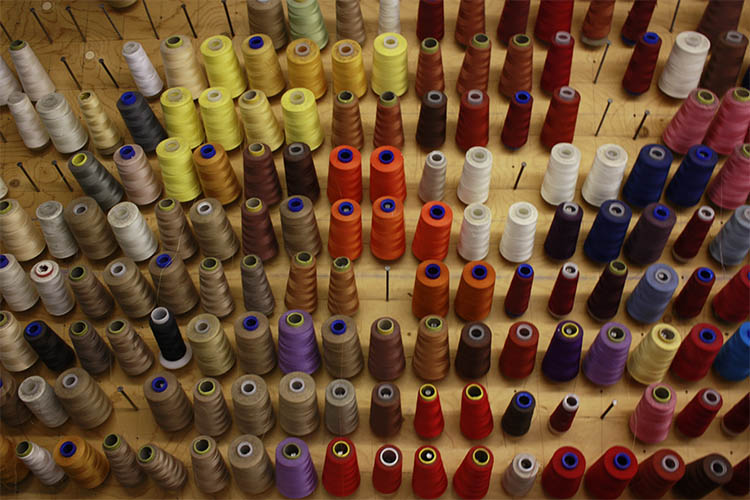
A wall of thread rolls decorates Félix Lévesque’s workshop. Photo by Sarah Auclair.
With the rise of online thrifting, Élodie Lourimi and Christopher Montoya founded the first Montreal-based reselling application Upcycli in March 2019, where users across Canada can sell or buy second-hand clothes.
“We want to differentiate ourselves by raising awareness of upcycling, which is to reuse the material that already exists to make something new,” says co-founder Lourimi.
Unlike its competitors such as Depop and Poshmark, Upcycli focuses on being waste-conscious and sustainable alternatives. They say they wish to make a difference in the way people consume.
“With a pant leg, you can make a pocket for yoga mats or a pencil case. There are lots of different and varied creative ideas to work with,” she says.
In the near future, Lourimi and Montoya wish to organize crafting and educational workshops where people can learn to sew and create their own garments.
“The idea is that people bring back their old clothes that are too damaged and that they leave with a brand new item that has a utility greater than that which he had in his first life,” says Lourimi in French.
When asked about reselling applications, Thélot questions, “by buying it, do I incite the person who bought the new-season thing to resell it?”
He warns that this is especially true for higher-end pieces and trends.
“People don’t always go towards older stuff,” he says. “If I trust the interest that our students have in this subject, I can say that there is a very solid future in Montréal for thrift stores, resale and eco-responsible fashion,” says CÉGEP Marie-Victorin’s Fashion School coordinator Marco Roy.
According to Roy, the Fashion School is concerned with encouraging eco-responsibility through conferences and competitions.
The school encourages eco-responsibility through conferences and competitions like Fashion Revolution Week, which promotes slow fashion and more responsible industry practices. Roy says this year the school will be “moving towards targeting the development of zero waste products” and implementing a series of workshops focused on environmental causes.
While Roy agrees that thrift shoppers may have a beneficial environmental impact in the long term, he recognizes that there are challenges around thrifting’s negative stigma.
“People often have a feeling of shame when they say that they bought a piece of clothing from a thrift store. Some people seem to maintain a prejudice that the clothes in thrift stores are of poor quality, worn out or dirty. There is education to be done,” says Roy. “Online thrift stores can help rework the image to change that stigma.”
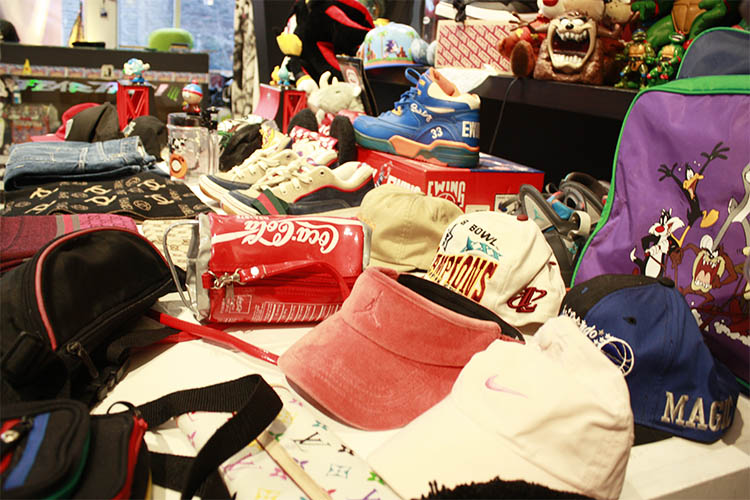
Clothes aren’t the only thing that can be sold second-hand. Accessories can be too. Photo by Sarah Auclair.
Thélot believes there is a generational gap when it comes to thrift stores’ perceptions, and that thrifting is seen as a leisurely activity and “this cool thing to do.”
“It’s not cool to have Kylie [Jenner’s] wardrobe. Nobody thinks that’s cool anymore, so having the opposite, which is thrifted things, and then, you know, you’ll throw in maybe a little marker of wealth in there. I think that’s where we’re at right now.”
Some millennials are even taking sustainability to a whole new level, in going for a zero-waste lifestyle.
Tippi Thole tells us about her zero-waste lifestyle. Video by Sarah Auclair.
For Brian Robinson, an associate professor at McGill University with a background in eco-environmental science, sustainability isn’t just about the environment.
He says that people often focus on the environment but forget other crucial factors that should be considered.
“Sustainability is essentially the reduction of production at this point, which would however negatively impact the economics,” says Robinson.
He believes sustainability can only be a realistic and efficient solution if it comes as a balance between the environment, economic sustainability and the equity element which allows people to meet their clothing needs.
